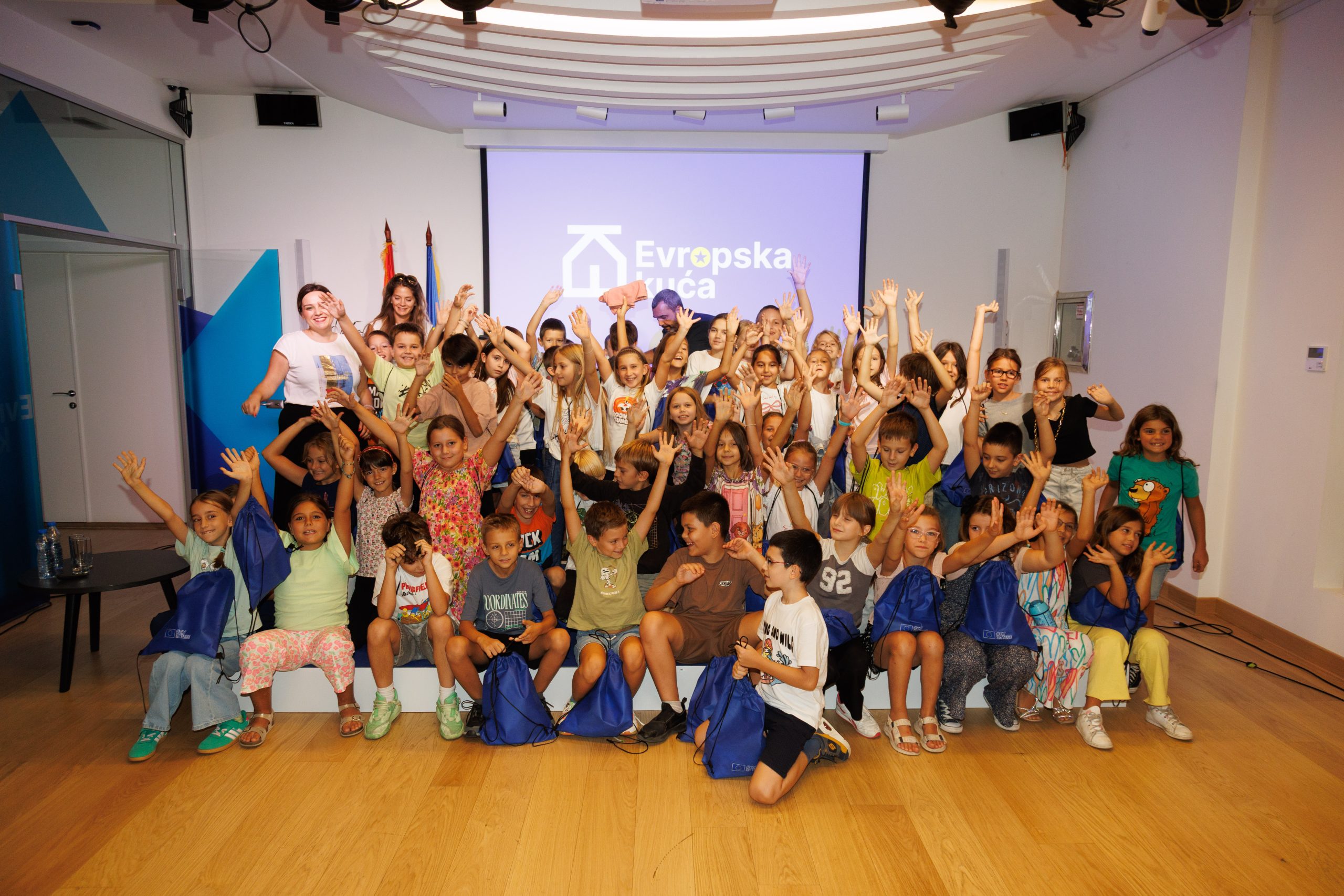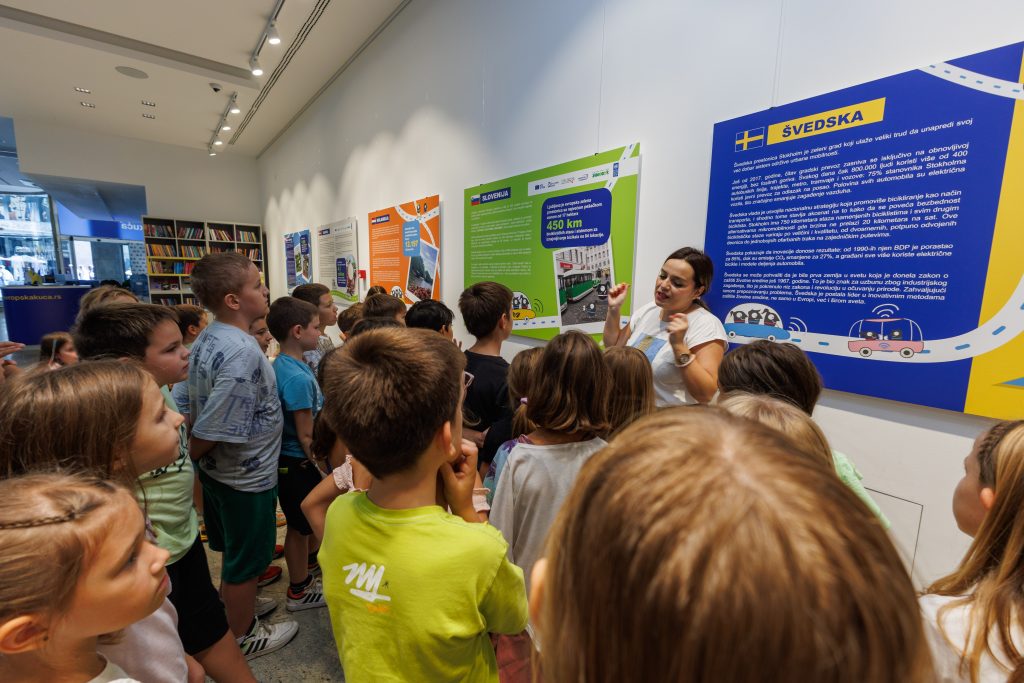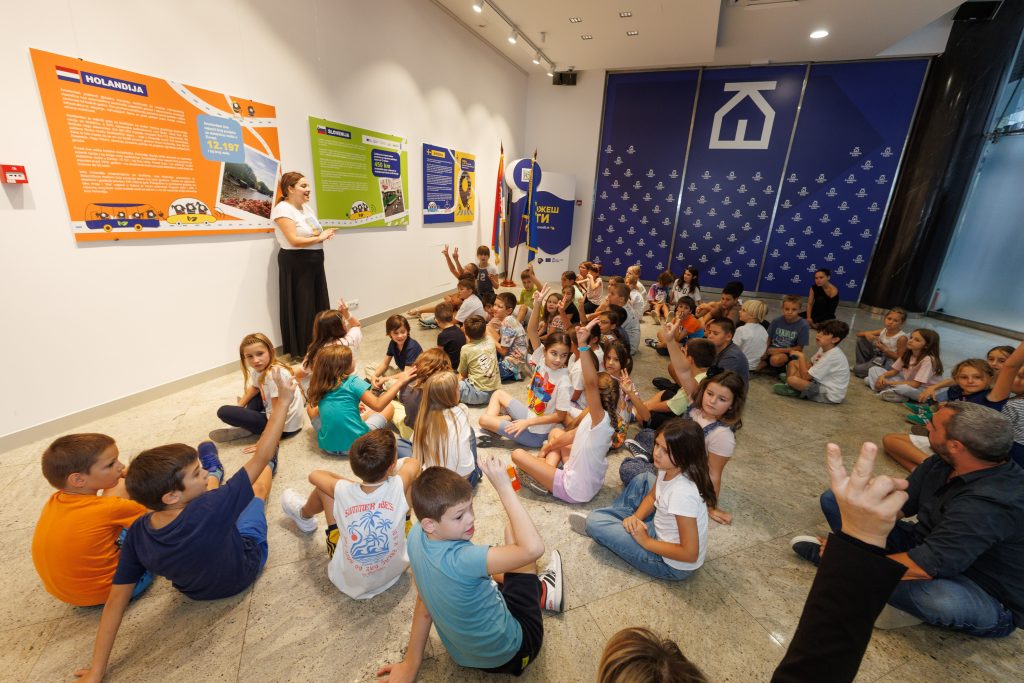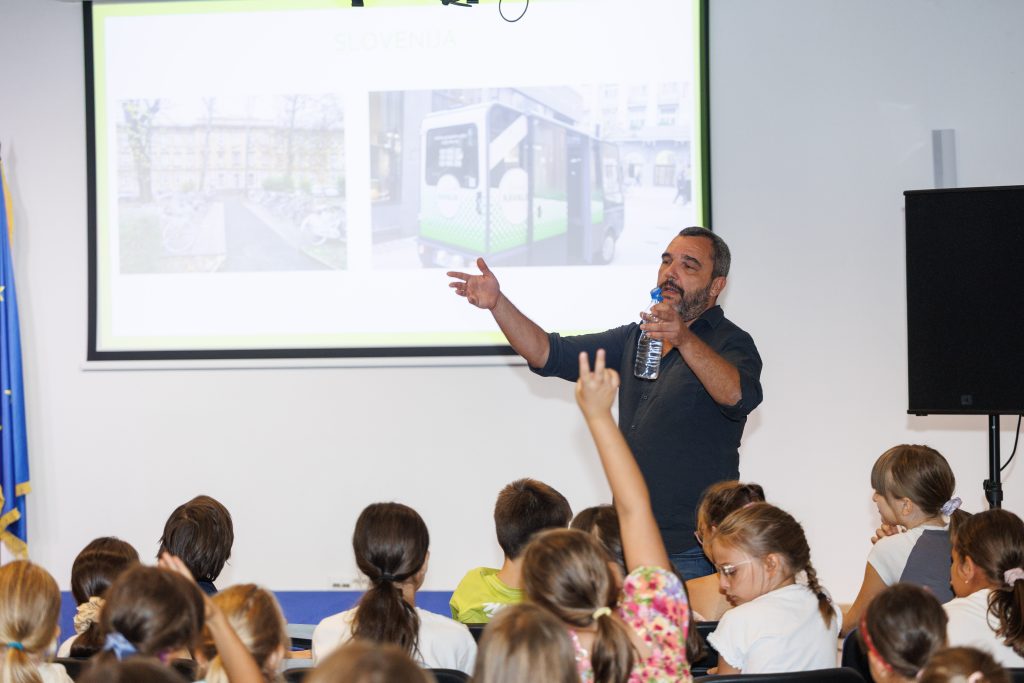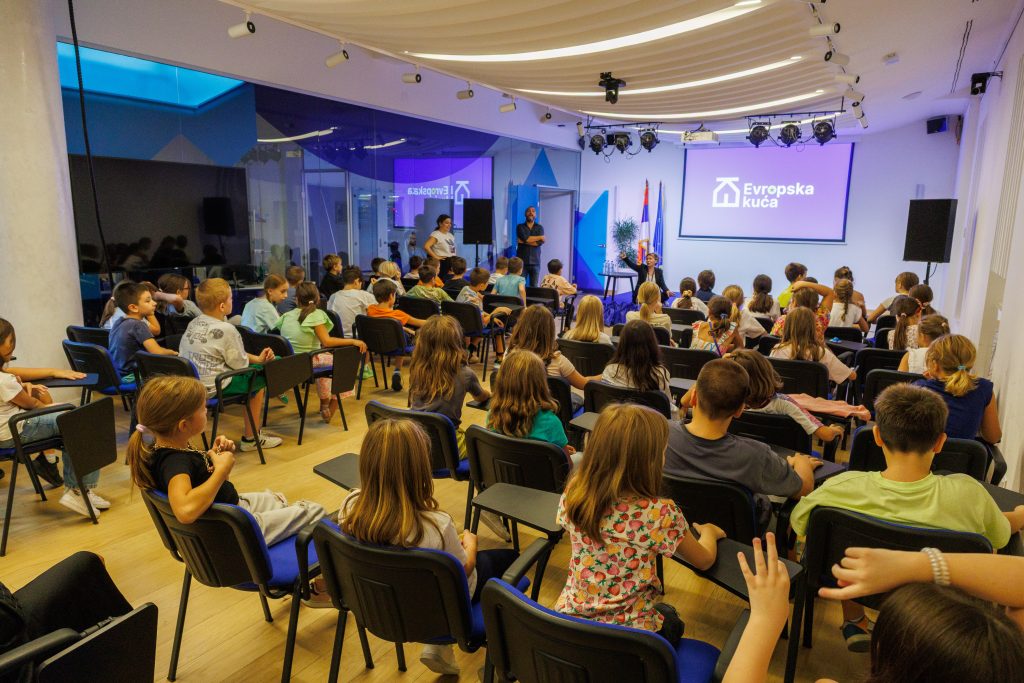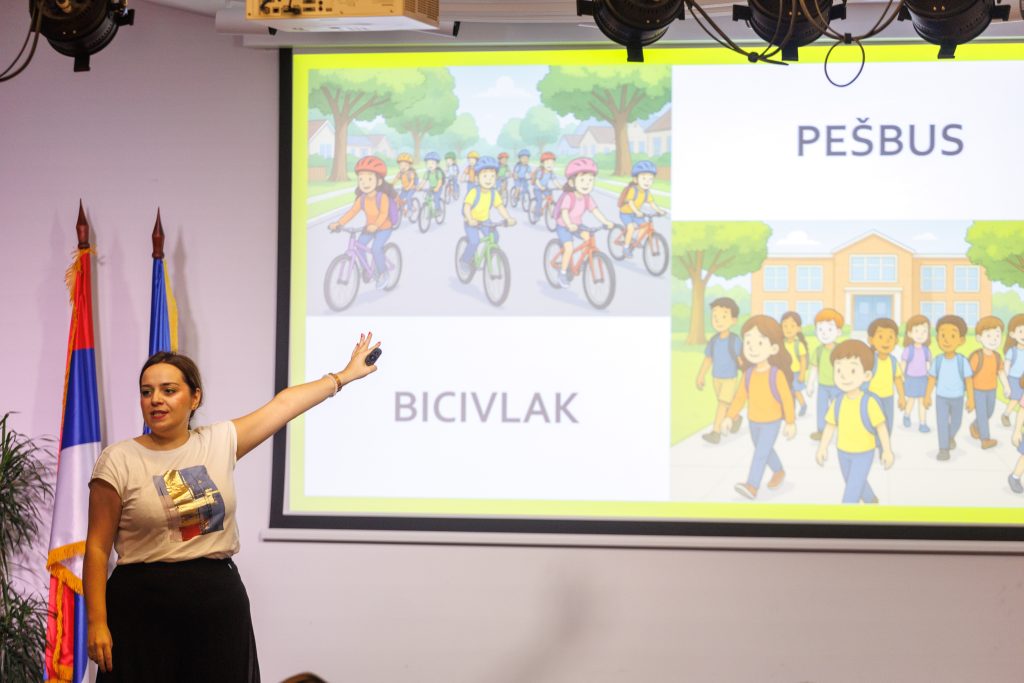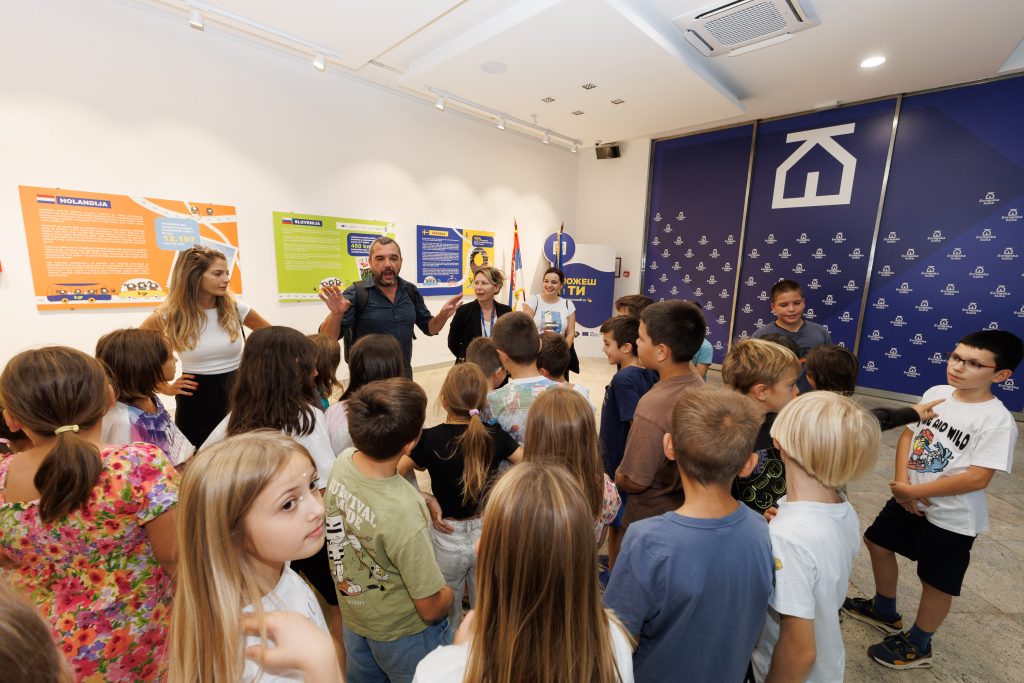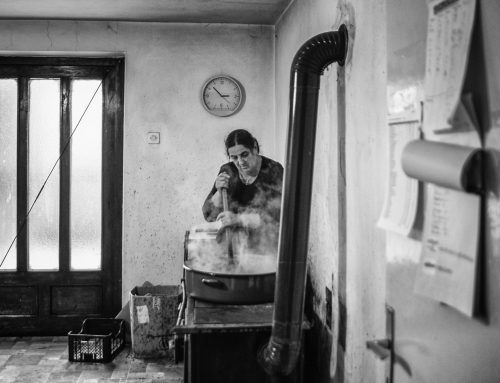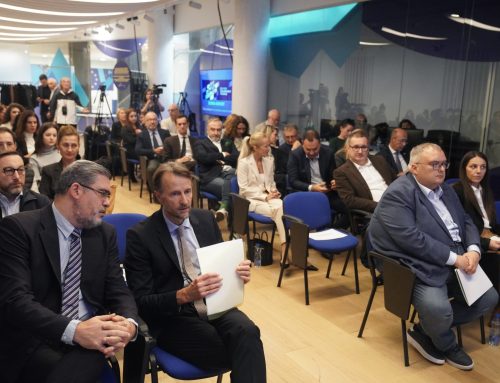What is mobility? Do children in the Netherlands ride electric scooters, and why does Amsterdam have more bicycles than inhabitants? Why is it important to fight climate change?
These were some of the questions raised during the School Lesson on Urban Mobility, held at Europe House. Sixty second-grade pupils from Drinka Pavlović Primary School in Belgrade took part in a double class dedicated to the history of urban mobility – from its earliest ideas to modern solutions. Through a creative and interactive approach, the children learned something new about alternative modes of transport and discovered how their more frequent use can directly contribute to the fight against climate change and the protection of the environment.
Why is it important to protect the environment, and how does the environment affect climate change? These are among the key issues of modern times and challenges for both the present and the future. Europe House, in cooperation with primary schools, educates our youngest generations, as they are the true drivers of change. That is why parents and pupils can soon expect more events dedicated to this important topic.
The event was organized within the framework of European Mobility Week and in cooperation with the project Pulse of Europe – Media Visits to Europe, which also provided the stories featured in the exhibition European Champions of Mobility.
View this post on Instagram
With this event, this year’s European Mobility Week in Serbia came to a close – a manifestation that has become a tradition and gathers more and more participants each year. In 2025, 21 municipalities and cities took part in activities such as Car-Free Day, bicycle and scooter rides, as well as the promotion of smart modes of transport that have minimal impact on the environment. On a global level, the campaign brought together 2,492 cities and municipalities from 46 countries.
Europe Houses in Belgrade and Niš organized a diverse program: an interactive track for practicing and learning cycling skills, virtual rides through European cities, talks with the EU Ambassador to Serbia, Andreas von Beckerath, and Olympic cyclist Ivan Stević, as well as exhibitions, educational workshops on sustainable mobility and traffic safety, discussions, and presentations.
More than 10,000 participants – cyclists, pupils, teachers, passers-by, and all interested citizens – have directly taken part in European Mobility Week activities over the past five years, with the support of the EU in Serbia and its partners. Participants had the opportunity to contribute to a healthier and cleaner environment, to hear and see examples from European countries, to share their own ideas, and to exchange experiences with others. A significant part of the campaign focuses on promoting improvements to local infrastructure, with the aim of increasing safety and creating better conditions for traffic, with special attention to pedestrians, cyclists, and public transport.
This year’s European Mobility Week in Serbia highlights European initiatives for green and inclusive transport, including the European Social Climate Fund and the Pulse of Europe initiative. Since its launch in 2002, European Mobility Week has helped thousands of cities across Europe and the world raise awareness of sustainable mobility and encourage behavior change towards walking, cycling, and using public transport.

